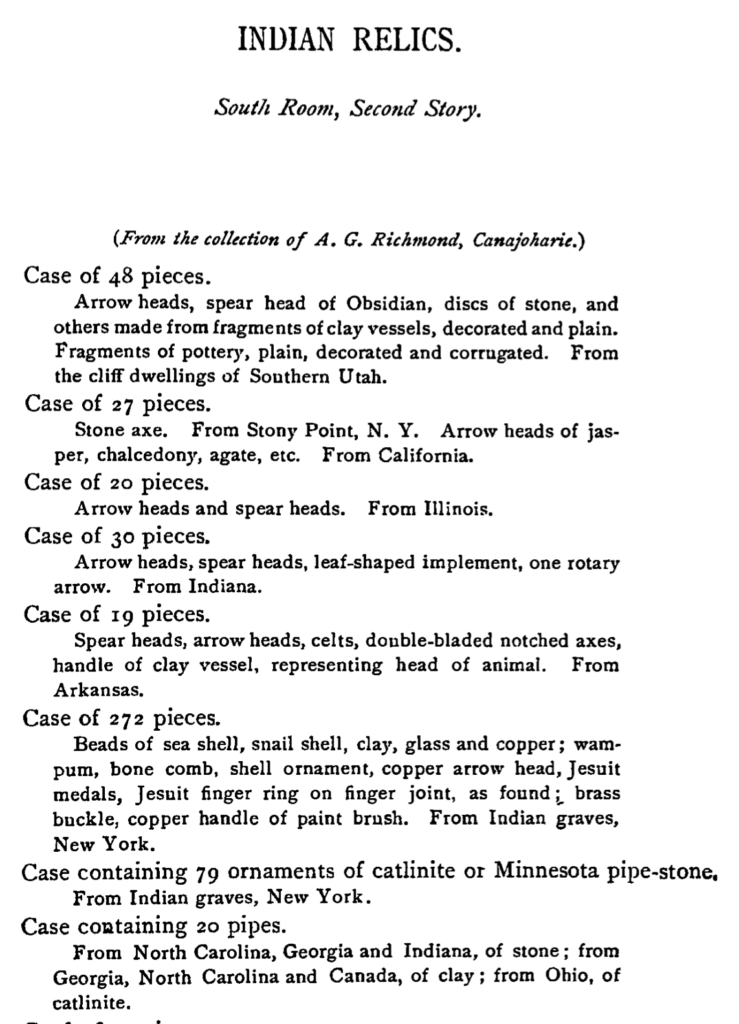
The catalog of the Bicentennial Loan Exhibition explained that the purpose of the Exhibition, held in the Albany Academy building in July of 1886, was to demonstrate the growth, development, and historic past of Albany, but it quickly allowed that “it includes any thing of interest in connection with the colonial or State governments of New York and surrounding commonwealths, and all articles of value or artistic worth, such as pictures, prints, statuary, ceramics, glass, ivories, old furniture, ancient dress, Indian relics, bric-a-brac, silver, bronzes, personal ornaments, books, pamphlets, manuscripts, maps, etc.” In other words, pretty much anything that a prominent citizen of the area wanted to show they owned.
In case you thought that perhaps the mechanics of artifact borrowing was less refined in the late 19th century, consider this description from the catalog:
“All articles are moved free of expense, and by expert workmen. Receipts are given for all articles received. After the closing of the exhibition, articles belonging to parties who are out of town will be stored with the Safe Deposit Company, to await the owners’ return. A general insurance against loss or damage by fire, as far as practicable, has been effected on all articles; and a specific insurance on specific articles at the request of their owners, and at such valuation as they have desired. Watchmen are employed day and night to guard the collection. Small articles of special value are exhibited in glass cases, locked and guarded. The building itself, as is well known, is a substantial, detached, stone structure, affording a minimum of fire risk.”
Pictured is only the first of 12 pages of “Indian Relics,” which displayed no end of fascination with flints, celts, arrowheads, and stone pipes, but also included some rattles, quill ornaments, and portraits of Red Jacket and John the Corn-planter. And then some more flints and arrowheads.

Leave a Reply